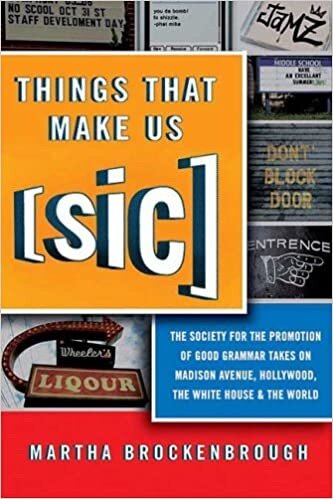Freedom in Structure and Other Thoughts About Words
This Thursday will be National Grammar Day in the United States, designated by none other than my colleague Martha Brockenbrough. I almost said "founded" but you can't found a day, or find it, for that matter, can you?
Martha also wrote a book on the subject of good grammar and its place in the world order: Things That Make Us (Sic): The Society for the Promotion of Good Grammar Takes on Madison Avenue, Hollywood, the White House, and the World. It's the American answer to Lynne Truss's well-known meditation on hungry (or murderous) pandas.
Seriously, who but writers finds grammar so compelling? Consider these principles from syndicated columnist Catherine Rampell's English teacher. Here's the first:
Learn all the rules of language, even the stodgy-seeming ones. You will find freedom in structure.
To which Rampell writes:
Initially, this exactitude felt constricting. But once we mastered Mr. Greco’s rules — learned who from whom, and whatnot — they were liberating. He taught us the masonry of language. Now we could build whatever we liked. I remember realizing, at age 12, how awesome it was that words and sentences could do my bidding.
I get that! I do. My 12-year-old self was thrilled to pieces when she understood the distinction between "who" and "whom." Mind you, "whom" will probably fall off the language map in my lifetime--I found myself striking it out of a draft recently for sounding, well, stodgy. But the neural pathway the distinction wired for me--that's the point of finding joy in the company of words.
